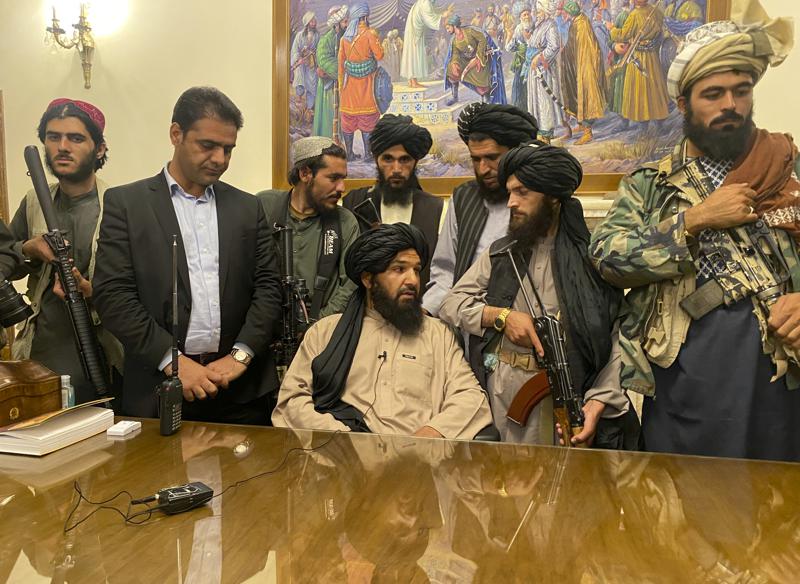Security
10 things to know about Afghanistan, Taliban

The Taliban has declared the war in Afghanistan over after its fighters swept into the capital, Kabul, and President Ashraf Ghani fled the country.
The streets of Kabul were quiet on Monday, but there were scenes of chaos and panic at the international airport as hundreds of Afghans desperate to leave the country flooded the tarmac.
More than 60 nations released the joint statement distributed by the U.S. State Department late Sunday night Washington time. The statement says that those in power and authority across Afghanistan “bear responsibility — and accountability — for the protection of human life and property, and for the immediate restoration of security and civil order.”
The United States and other Western nations were also scrambling to evacuate their diplomats and citizens but for a lot of people still shocked and not sure what is going here in the country – As the insurgents closed in, President Ashraf Ghani flew out of the country.
“The former president of Afghanistan left Afghanistan, leaving the country in this difficult situation,” said Abdullah Abdullah, the head of the Afghan National Reconciliation Council and a longtime rival of Ghani. “God should hold him accountable.”
Ghani later posted on Facebook that he left to avert bloodshed in the capital, without saying where he had gone – here are the top 10 things to know about Afghanistan, the Taliban and invasion by United States Military.
Additional Credit sources includes the BBC, Aljazeera and Today.

(1) April 1979: In the Saur Revolution, or April Coup, the People’s Democratic Party of Afghanistan assassinates Afghan President Mohammed Daoud Khan and in December 1979, Soviets invaded Afghanistan in order to prop up the government, which faced internal rebellion. In 1989: As the Soviet Union disintegrated, the army withdrew, leaving the Afghan forces to take the lead in fighting an American-funded insurgency. US intelligence estimates over 15,000 Soviet troops died in the decade-long war. The Soviets kept advisers with the Afghans and continued financing the military.
(2) 1992: The American CIA, which backed Afghan rebel groups, withdrew its aid. The Russians also cut its funding. The pro-Russian government was overthrown, and Afghanistan was plunged into a bloody civil war, setting the stage for the Taliban to assume power four years later – In 1994: The Taliban, or “students” in the Pashto language, emerges from Islamist fighters in Pakistan and Afghanistan who fought against the Soviet invasion of Afghanistan for over a decade. That conflict ended in 1989.
(3) 1996: After a two-year civil war, most of Afghanistan comes under the control of the Taliban, who institute fundamentalist policies and widespread repression of human rights – In Sep.11, 2001: Terrorists affiliated with al-Qaida hijack commercial planes to execute terror attacks on the World Trade Center in New York City and the Pentagon outside Washington. The terrorists planned, trained and directed the attacks from Afghanistan.
(4) Oct. 7, 2001: U.S. and United Kingdom forces begin Operation Enduring Freedom, a bombing campaign against Taliban forces in Afghanistan . In Dec. 17, 2001: U.S. and allied forces have driven Taliban from power in Afghanistan. Al-Qaida disperses.
(5) April 17, 2002: President George W. Bush calls for a Marshall Plan for Afghanistan – March 20, 2003: U.S. invades Iraq, diverting military resources and attention from Afghanistan.
(6) Feb. 17, 2009: President Barack Obama recommits U.S. forces to Afghanistan to combat “resurgent” Taliban and in March 27, 2009: Obama announces new strategy for Afghanistan, connecting the return of the group in parts of the country to the Pakistani Taliban. He calls for greater cooperation from Pakistan. Dec. 1, 2009: Obama announces 30,000 additional troops will be sent to Afghanistan on top of the 68,000 already stationed in the country in a move later known as “the surge.”
(7) Abdul Ghani Baradar, the Taliban leader freed from a Pakistani jail on the request of the US less than three years ago, Born in Uruzgan province in 1968, he fought in the Afghan mujahideen against the Soviets in the 1980s. After the Russians were driven out in 1992 and the country fell into civil war between rival warlords, Baradar set up a madrassa in Kandahar with his former commander and reputed brother in law, Mohammad Omar.
(8) In Feb 29, 2020: President Donald Trump negotiates a deal with the Taliban for U.S. troop withdrawal by May 1, 2021. Nov. 17, 2020: Pentagon announces plans to reduce troop levels to 2,500 in Afghanistan and Iraq in final days of Trump administration. In April 14, 2021: President Joe Biden announces that full troop withdrawal from Afghanistan will be complete by Sept. 11. – May 1: The U.S. begins final troop withdrawal from Afghanistan. July 6: The U.S. evacuates Bagram Airfield, the largest military installation in the country since 2001 invasion. Aug. 6: Provincial capitals begin to fall to the Taliban.
(9) The Taliban, or “students” in the Pashto language, emerged in the early 1990s in northern Pakistan following the withdrawal of Soviet troops from Afghanistan. It is believed that the predominantly Pashtun movement first appeared in religious seminaries – mostly paid for by money from Saudi Arabia – which preached a hardline form of Sunni Islam. The promise made by the Taliban – in Pashtun areas straddling Pakistan and Afghanistan – was to restore peace and security and enforce their own austere version of Sharia, or Islamic law, once in power.
(10) The Taliban also banned television, music and cinema, and disapproved of girls aged 10 and over going to school. They were accused of various human rights and cultural abuses. One notorious example was in 2001, when the Taliban went ahead with the destruction of the famous Bamiyan Buddha statues in central Afghanistan, despite international outrage.
.






